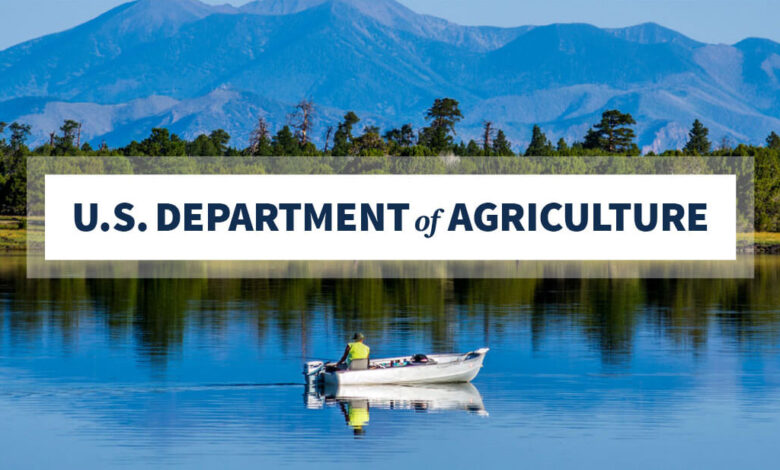USDA Forest Service Seeks Public Comment on Draft Guidance for Old Growth Management on National Forests

WASHINGTON, June 20, 2024 — Tomorrow, the U.S. Department of Agriculture’s Forest Service is taking the next step to advance President Biden’s commitment to conserve old growth forests by publishing a draft environmental impact statement for the proposed national old growth forest plan amendment. The proposed amendment will be available tomorrow in the Federal Register, and will be open for public comment for 90 days following publication.
The purpose of this amendment is to provide consistent guidance for the stewardship, conservation, and recruitment of old growth across national forests. The proposed amendment highlights the importance of proactive stewardship actions in managing threats to old growth forests, and to reduce wildfire risk, considering current and emerging climate-driven threats. It also calls for adaptive management strategies to be developed using local, geographically relevant information and the best available science, including Indigenous Knowledge.
“Recent scientific analysis shows us that many old-growth forests are under significant threat from climate change,” said Agriculture Secretary Tom Vilsack. “The Forest Service’s plan will help safeguard these iconic stands of trees through science-based management and conservation strategies that can be adapted to unique local circumstances on national forests. USDA is looking forward to receiving feedback on today’s draft proposal from Tribal, state and local governments, industry partners, conservation organizations, and many others; all of whom will be critical partners in the forest management and conservation actions needed to ensure the maintenance and growth of old-growth forests into the future.”
“Under President Biden’s leadership, we are taking action to ensure that millions of acres of old growth forests across the nation are conserved, resilient, and abundant for future generations,” said White House Council on Environmental Quality Chair Brenda Mallory. “With our nation’s forests absorbing more than 10% of our annual greenhouse gas emissions, protecting and expanding old growth is critical to delivering on the Biden-Harris Administration’s climate and conservation priorities.”
“Our old growth forests breathe in carbon pollution, cleaning up the air, and filter our water, cleaning up rivers and streams. These forests are an essential partner in tackling climate change. President Biden’s historic leadership on climate – including his executive order on safeguarding our forest system – leans into that partnership and potential by advancing climate-smart forestry and investing in forest restoration,” said Assistant to President Biden and National Climate Advisor Ali Zaidi. “Today’s action will help better inform the stewardship of the national forest system and strengthen our work to deploy nature-based solutions that improve the resilience of lands, waters, wildlife, and communities.”
“Old growth forests are important to our ecosystems by capturing carbon, and contributing to clean air, soil, water and diverse habitats,” said Forest Service Chief Randy Moore. “Old forests also provide other benefits like subsistence and cultural uses, outdoor recreational opportunities and sustainable local economic development. The proposed old growth amendment will provide guidance that can be adapted locally to support multiple uses, including proactive stewardship of old forests to reduce wildfire risk and create long-term resilience in a changing climate.
At President Biden’s direction, the Forest Service and the Department of the Interior’s Bureau of Land Management (BLM) completed the first-ever nationwide inventory of old and mature forests, and developed definitions for more than 200 forest types in the United States. This initial inventory report showed that the BLM and Forest Service manage approximately 32 million acres of old growth and 80 million acres of mature forests on federally managed lands, for a total of 112 million acres. Old-growth forests represent 18% and mature forest another 45% of all forested land managed by the two agencies.
The Forest Service also recently finalized The Mature and Old Growth Threat Analysis, which identifies threats to mature and old growth forests on Forest Service and BLM lands. The report informed the Forest Service’s proposed national amendment and highlights the urgent need for action, suggesting current management is not responsive enough to address disturbances driven by climate change such as wildfire, insects and disease.
The Forest Service evaluated Tribal and public input from the initial scoping period, which closed February 2, 2024. Extensive feedback from a diverse range of audiences was vital in the development of the draft environmental impact statement and were incorporated into the proposed action and used to develop alternatives. The agency will continue to learn from the input and feedback received during this public comment period, as well as through ongoing Tribal roundtables and consultation sessions, and dialogue with cooperating agencies, and state and local governments.
This work is part of larger agency efforts to support healthy, resilient forests and ecosystems by integrating climate change considerations into all aspects of planning and operations to support healthy resilient forests and ecosystems. The work is consistent with the Inflation Reduction Act which directed $50 million to fund old growth conservation and stewardship as well as Executive Order 14072, Strengthening the Nation’s Forests, Communities, and Local Economies, issued by President Biden on April 22, 2022. It also supports the Forest Service’s Wildfire Crisis Strategy and Reforestation Strategy (PDF, 7 MB). In addition, USDA announced updates to its Climate Adaptation Plan earlier today, in concert with other agencies acting to advance climate resilience.
Throughout the comment period, the Forest Service will conduct public engagements and field tours, including virtual information sessions. The agency will also continue formal consultation with Tribes, and work with state and local governments, conservation districts and other cooperating agencies. Additional information on engagement opportunities is available on the Forest Service National Old Growth Amendment website.
USDA touches the lives of all Americans each day in so many positive ways. In the Biden-Harris Administration, USDA is transforming America’s food system with a greater focus on more resilient local and regional food production, fairer markets for all producers, ensuring access to safe, healthy and nutritious food in all communities, building new markets and streams of income for farmers and producers using climate smart food and forestry practices, making historic investments in infrastructure and clean energy capabilities in rural America, and committing to equity across the Department by removing systemic barriers and building a workforce more representative of America. To learn more, visit www.usda.gov.
#
USDA is an equal opportunity provider, employer, and lender.



